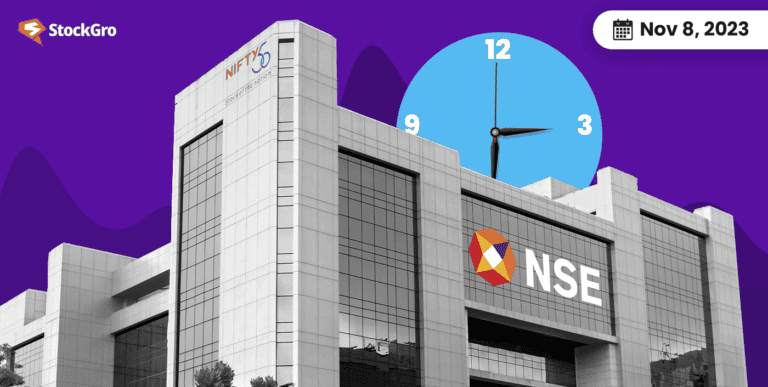
In India, Small and Medium Enterprises (SMEs) form the backbone of the economy, contributing significantly to the country’s GDP, industrial output, and job generation. To fuel growth and expansion, these SMEs often require capital from outside since they usually don’t have the cash flows needed to finance their growth.
One way they can raise significant amounts of capital is through Initial Public Offerings (IPOs), which are retail investments into their company. However, they’re not regular IPOs – these are IPOs that are specifically tailored for a small to medium scale, known as SME IPOs.
You may also like: What is Capital Market – an engaging guide for beginners
What are SME IPOs?
SME IPOs are stock market launches specifically designed for small and medium-sized enterprises. SMEs have assets or revenues lower than a specific cut-off level, usually much lower than their large-corporation counterparts.
Since these companies usually lack access to traditional funding sources due to their size and financial history, SME IPOs provide them with an opportunity to raise capital by issuing shares to the public.
Some popular SME IPOs in India have been:
- Gayatri Rubbers and Chemicals Ltd.
- Quicktouch Technologies Ltd.
- Krishna Strapping Solutions Ltd.
- Vasa Denticity Ltd.
- Goyal Salt Ltd.
- Macfos Ltd.
Compliance and listing requirements
Not every company can apply to a SME IPO – certain conditions need to be fulfilled by the company to qualify. Here are some of them:
- The SME should be incorporated under the Companies Act, 1956.
- The SME should have a face value (post-issue paid-up capital) of up to ₹25 Crore.
- The SME’s net tangible assets should be worth ₹1.5 Crore.
- The SME must have a track record of a minimum of three years if it was formed by converting partnership/proprietorship/LLP firms.
- The SME should have a website.
- The company’s promoters should not change for at least a year after filing the IPO.
- The SME should agree to trade in Demat securities.
- The company’s financial statements should show distributable profits for at least two out of three preceding financial years, excluding any extraordinary incomes.
- The minimum trading lots for SME IPOs should range from 100 to 10,000 shares, depending on the price, volumes, and more.
- There should be no winding-up petition against the company in any court across the country.
- The company’s promoters should remain constant for at least one year preceding the application of the SME IPO.
There are certainly other qualifications that companies need to fulfil, but they depend on the industry of the company, the amount of capital it needs to raise, and the broader macroeconomic environment also.
Also Read: Understanding the difference between equity and debt IPO for the right investment
Listing process for an SME IPO
Here’s the step-by-step process of how SME IPOs are listed:
- Appointing an underwriter – This step is common to both regular IPOs and SME IPOs. It entails appointing a merchant banker, usually investment banks, who can gauge market sentiment and expectations to price the IPOs shares accordingly.
Underwriters are also responsible for rafting IPO documents about face value, selling price, etc. These underwriters charge fees, which is usually a small percentage of the total value of the IPO. - Red Herring Prospectus – The Draft Red Herring Prospectus (DRHP) is a document that gives potential investors access to the company’s information, including data about their operations and projects.
The DRHP is drafted by the underwriter (chosen in the step above) and allows investors to get to know the financials of the company before they invest. - Advertise the IPO and set launch date – Once the stock exchange approves the draft of the DRHP and the launch and closing dates etc. are finalised, marketing the IPO is also very important. Driving up demand for the IPO can help the stock perform well on the first day.
- Allotting shares – On the opening date, investors can subscribe to a minimum set amount of shares before the closing date. The allotment happens after the closing date, where a select number of investors from the pool are allotted shares.
After the IPO is officially launched and the shares have been allocated, the stock starts trading on the market and exchanges.
Advantages and challenges of an SME IPO
Advantages
- Access to capital – SME IPOs allow smaller companies to raise money from the market for expansion, research, development, and working capital.
- Enhanced visibility – IPOs let small companies come into the public light, and in turn make it easy for them to attract customers, suppliers, and potential business opportunities in the future.
- Liquidity for promoters and investors – SME IPOs allow the company’s early-stage investors to make an exit.
Challenges
- Compliance is strict – SME IPOs are more stringent compared to main market listings, and have stricter rules on disclosures.
- Investor education – No matter how well these IPOs are launched, there is always a risk associated with investing in an SME. This means that the underwriters and the company have to spend more time and effort marketing and advertising the IPO to investors.
Also Read: Tata technologies IPO after 20 years in the TATA conglomerate.
Conclusion
SME IPOs play a crucial role in the growth and development of small and medium-sized enterprises in India. They offer an opportunity for these businesses to raise capital, gain visibility, and access the equity market.
While these IPOs come with their set of challenges, they remain a vital avenue for SMEs looking to expand and achieve their growth ambitions.



Leave a Comment